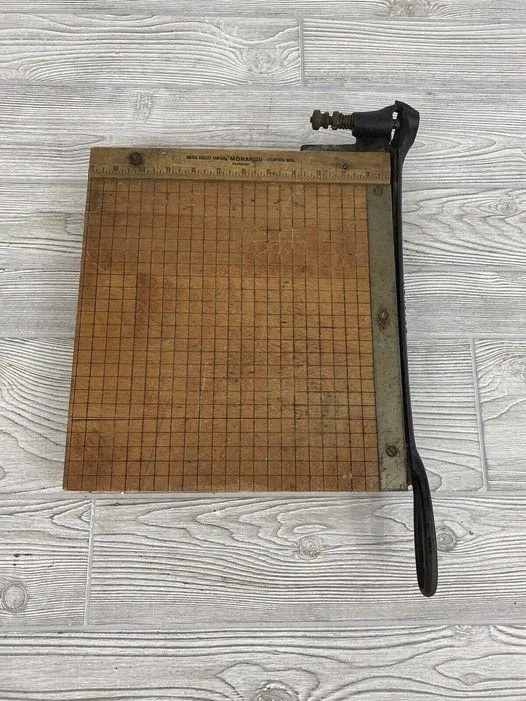
In an era dominated by digital devices and automated systems, it’s easy to overlook the manual tools that once formed the backbone of daily life. These hand-operated devices, from paper cutters to kitchen gadgets, were not only functional but also exemplified the ingenuity and craftsmanship of their time. Let’s take a nostalgic journey through some of these remarkable tools that shaped our past.
The Guillotine Paper Cutter: Precision in Simplicity
The guillotine paper cutter, also known as the paper shear, emerged in the early 19th century. French engineer Guillaume Massiquot patented this device in 1844, drawing inspiration from the guillotine used for executions. His design featured a sharp blade mounted on a lever arm, allowing users to cut paper with remarkable precision and ease. This tool quickly became indispensable in offices, print shops, and bookbinding industries, streamlining the process of producing books, brochures, and other printed materials.
Kitchen Companions: Tools That Stirred Up Culinary Delights
Before the advent of electric mixers and food processors, manual kitchen tools were the heart of culinary endeavors. Hand-cranked egg beaters, rotary graters, and wooden rolling pins were staples in every kitchen. These tools required physical effort but offered a tactile connection to the cooking process, turning meal preparation into a labor of love.
Typewriters: The Original Word Processors
Long before computers became commonplace, typewriters were the primary means of producing written documents. Manual typewriters, with their clacking keys and ink ribbons, transformed the way people communicated, from business correspondence to literary masterpieces. Each keystroke was a deliberate act, making the writing process both mechanical and meditative.
Hand Drills and Woodworking Tools: Crafting with Care
In workshops and garages, manual hand drills and woodworking tools were essential for building and repairing. These tools demanded skill and patience, allowing craftsmen to create intricate designs and sturdy structures. The absence of power cords and batteries meant that the user’s strength and precision were paramount, fostering a deep understanding of the materials and techniques involved.
The Legacy of Manual Devices
While modern technology offers convenience and speed, the manual tools of the past remind us of a time when craftsmanship and hands-on effort were integral to daily life. These devices not only served practical purposes but also embodied the values of perseverance, attention to detail, and pride in one’s work. As we embrace the digital age, reflecting on these manual marvels offers a profound appreciation for the innovations that paved the way for today’s advancements.
Conclusion
The manual devices of yesteryear, from the guillotine paper cutter to the humble hand drill, played pivotal roles in shaping our world. They stand as testaments to human ingenuity and the enduring spirit of craftsmanship. By revisiting and honoring these tools, we not only preserve their legacy but also gain inspiration for future innovations that blend tradition with technology.





